Embracing Iceland in the Arctic winter
This Arctic destination was previously off limits in the winter because of its remoteness. Now it’s been heralded as one of the best places to see the Northern Lights – if you’re brave enough.
When it comes to the sensation of getting away, travel, like time, is relative. More and more, I journey to the other side of the world, only to find that I haven’t gone far. Rare trips are giant leaps. So I think as my plane from London comes in to land on the Reykjanes Peninsula in south-western Iceland, flying directly above the fiery furnace of an erupting volcanic fissure, its shoulders still blanketed in snow. A giant foxtail of ash and sulphur dioxide has turned the 10am-rising sun behind it to a digital red; the sky has a leaden orange glow. I have flown just over three hours north and I feel like I’m about to touch down on Mars.
Just south of the Arctic Circle, this otherworldly realm suspended between fire and ice straddles the North American and Eurasian tectonic plates, holding 130 volcanoes and 269 ice caps and glaciers in just 104 square kilometres. Geologically speaking a newborn that rose from the ocean more than 100 million years after the Jurassic age, Iceland is a frozen geothermal wonderland with its own set of rules that might have been conjured by Tolkien and CGI. And I’m on my way to its remotest part, perhaps Western Europe’s most untouched wilderness, to experience the emptiness at the silent eye of one of the most sparsely populated nations on the planet.
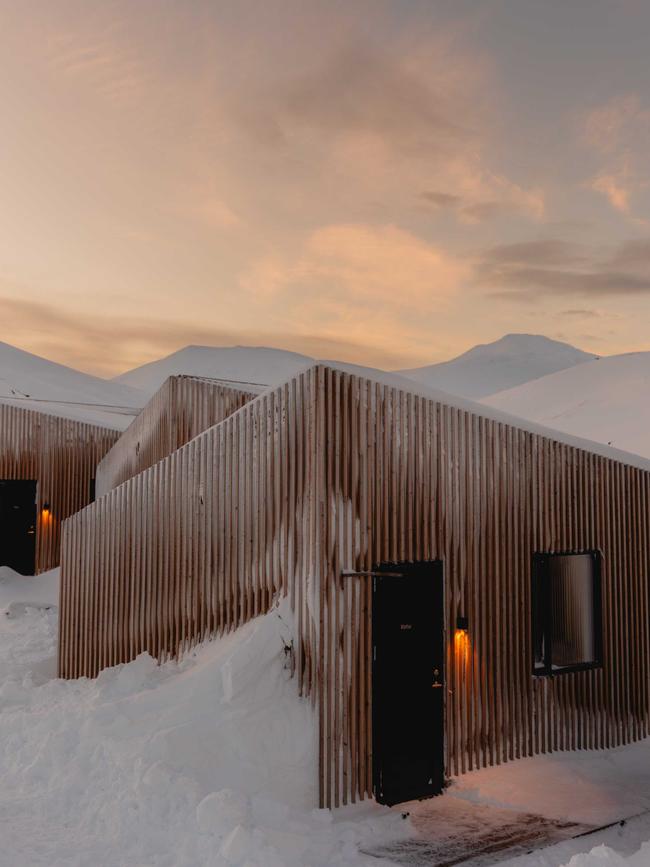
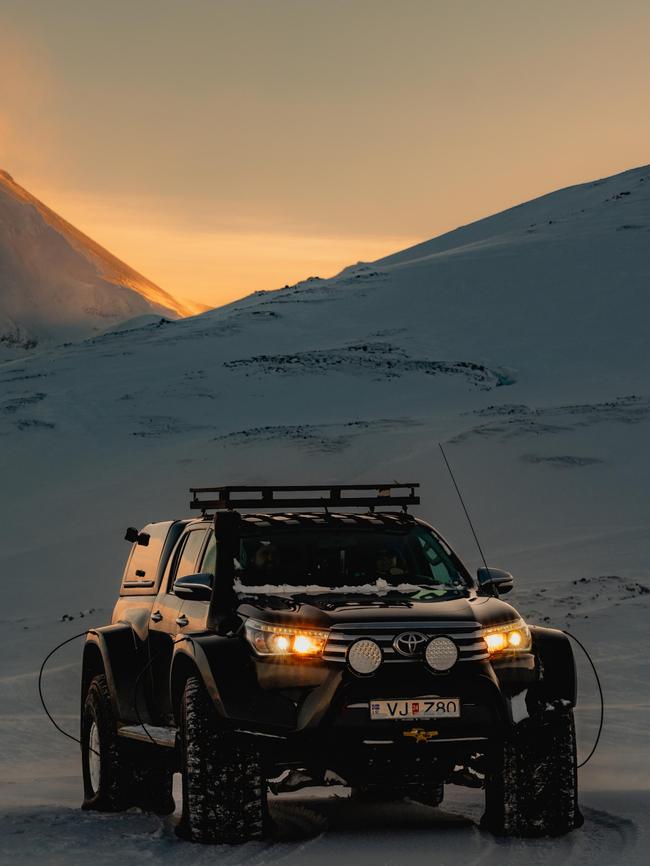
What’s more, I’m here in the Arctic winter. It’s early February and minus 15 degrees Celsius outside. Wooden homes in the bay of the village-like capital, Reykjavík (north of Reykjanes), huddle together before the Esja mountain range, which looms like a frozen tidal wave. Wrapped up in a hybrid puffer-papoose, I feel as clumsy as an astronaut, waddling in and out of shops that sell polar gear and fur hats to prepare myself for Iceland’s Highlands. Even here, the freezing temperature stings my forehead. But it’s a pleasant sensation like the momentary burning of a shot of brennivín (the country’s signature aquavit) in my chest when I return to the lobby of The Reykjavík Edition, slung with faux lamb pelts, part of the redevelopment of the city’s ex-financial district along with the Olafur Eliasson-designed Harpa Concert Hall. This landscape inspires haunting compositions. Due to the eruption, I have been transferred here from The Retreat at Blue Lagoon Iceland, the world-famous spa at the Unesco Global Geopark on the Reykjanes Peninsula.
No matter. I’m on my way to visit its new sister property, Highland Base, opened in July last year in the uninhabited alpine wilderness in central Iceland. Blue Lagoon Ltd, founded in 1992 by Dr Grímur Sæmundsen, who expounded the benefits of the silica-rich water emitted by Svartsengi geothermal plant, is now a wellness and hospitality company worth an estimated $US400 million. It has capitalised on Iceland’s tourism boom over the 13 years since a financial crisis toppled the economy between 2008 and 2011, also the year an ash cloud from the Grímsvötn volcano grounded 900 flights, capturing the world’s attention. Iceland welcomed more than 2.2 million tourists last year, many looking to escape the pressure-cooker heat and claustrophobia of southern Europe. Highland Base is aimed at the most intrepid of them: those craving not only space and solitude but an off-world sense of remoteness. The adventure hotel, which bills itself as an “extreme paradise”, rather daringly opened in a valley of the Kerlingarfjöll mountain range, a vast, desolate 367-square-kilometre national park and moonscape of 70 mountains, glaciers, geothermal valleys and silence.
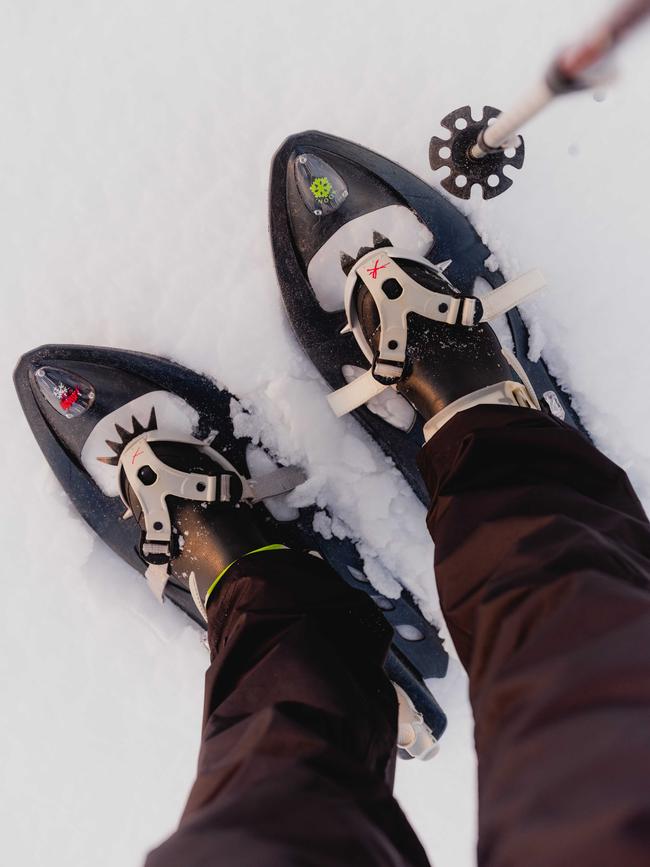
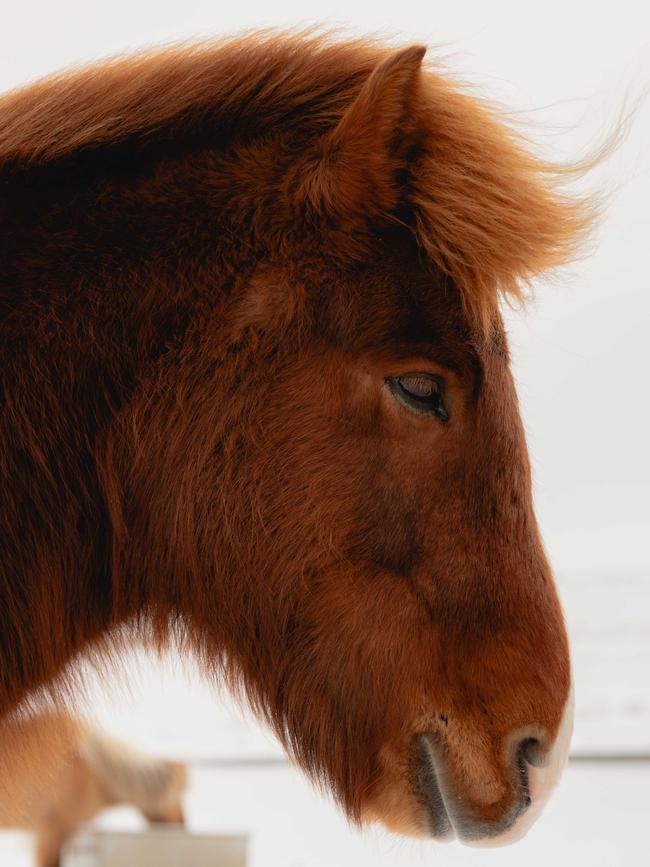
Previously, the area has been off limits in winter. With zero light pollution, now it’s heralded as one of the best places in Iceland to see the Northern Lights. That’s if you can get there. The first part of the journey – at least – is easy. We head north-east out of Reykjavík on route 36, driven by Finn, a chirpy chap built like a rugby player with a soft accent that sounds like boots crunching on snow. It is currently what the Icelanders call “window-weather” or “gluggaveður”– also the name for the local version of hygge – and the sun looks blind behind the snowy sky. I stare out to mountain ranges the colour and texture of barnacled whales each side of the road, giving the impression that I’m seeing in black and white. We pass through the south-western Golden Circle, one of the usual two tourist circuits along with the coastal ring road. At the Haukadalur valley of geysers, the snow explodes every seven minutes as though a grenade has been hurled at the Instagrammers who come here to pose by the Gullfoss waterfall and Kerið crater lake, the latter like a great dragon’s eye embedded in the earth.
But these shenanigans end at Skjól base camp, beyond which things get serious. Outside it, specially adapted superjeeps with pumped-up 44-inch tyres congregate like muscle Marys. Only these are capable of forging on into the nothingness on an ancient drovers’ track; in winter the road is closed and buried beneath drifts. Decompressible tyres hooked up to iPhones help the jeeps “float” over the snow into the relentless whiteness between the summits on the 700-metre-high Kjölur plateau. Somewhere in the distance before us are the 1,477-metre-high peaks of Kerlingarfjöll, between the Langjökull and Hofsjökull glaciers, among Iceland’s largest ice caps. In summer the 65-kilometre drive can take as little as 90 minutes. But in winter it can last between three and eight hours of creeping, sinking, rocking and digging out. It’s not for the fainthearted. Luckily, we are picked up in a beefy Land Cruiser driven by Ægir (nickname: King of the Road), a nimble snow dancer with translucent eyes that look bleached by snow blindness. With his CB radio, he could belong in the Wild West, were this white desert made of sand. “This is the Sahara of Europe,” he says as we float onwards as though we are gliding on clouds in the afterlife.
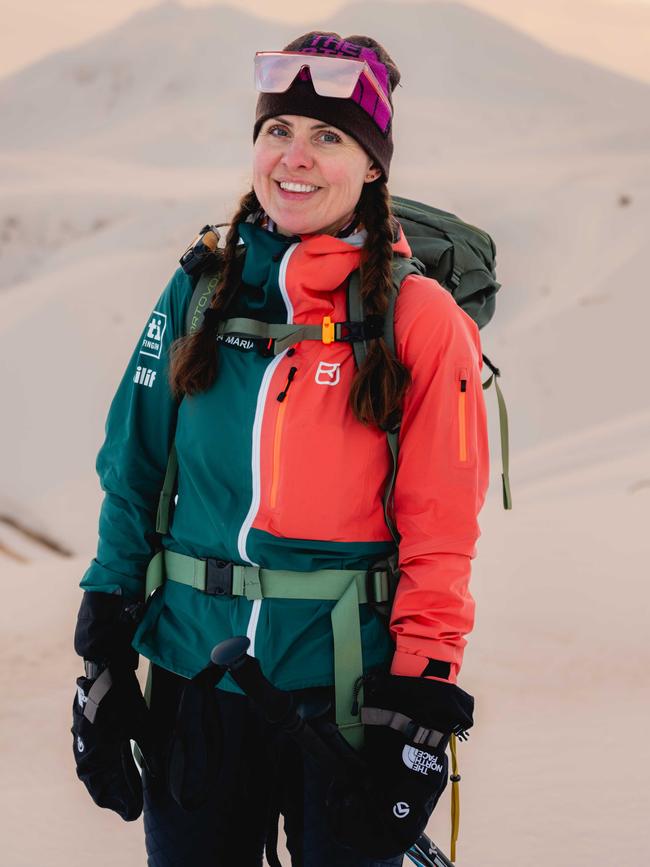
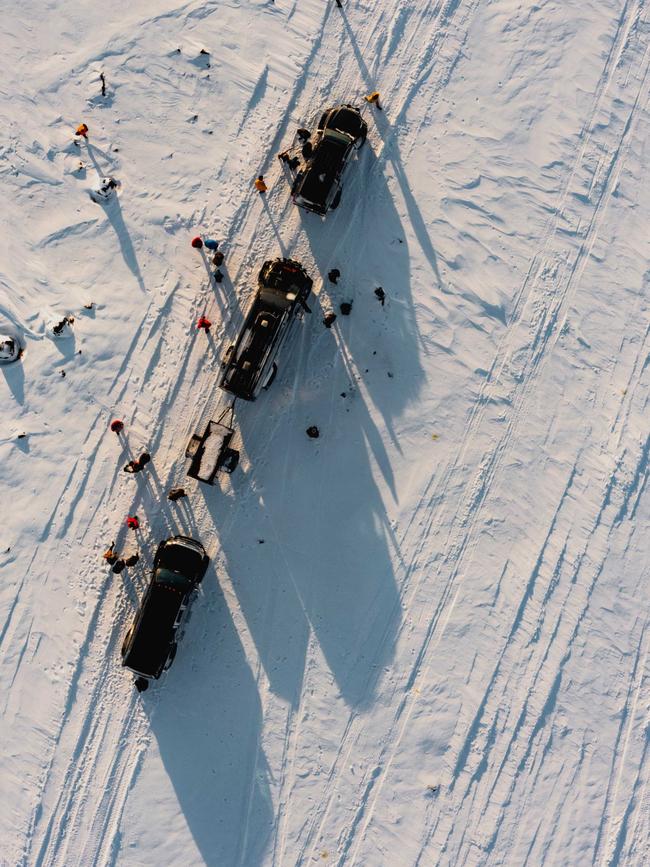
Unable to find a focal point, my mind drifts, empty of thought, until the peaks and dunes before us are finally tinged with the tangerine of dusk and then darken to a crystalline blue. Although it is minus 20 outside, we walk the last few hundred metres to the torch-like beam of Highland Base, which huddles like a space camp in the Ásgarður Valley dwarfed by the mountains that encircle it. Our shadows loom giant over the cluster of low-rise buildings as if they are thrown by the glow of a match. Inside, we’re met by Nordic minimalist interiors with iron chandeliers, fragrant wood and monochrome ceramics. We thaw out with lashings of hot mushroom soup, moreish rúgbrauð (rye bread) and sensational churned butter with sea salt that alone makes a three-hour journey from Skjól worthwhile.
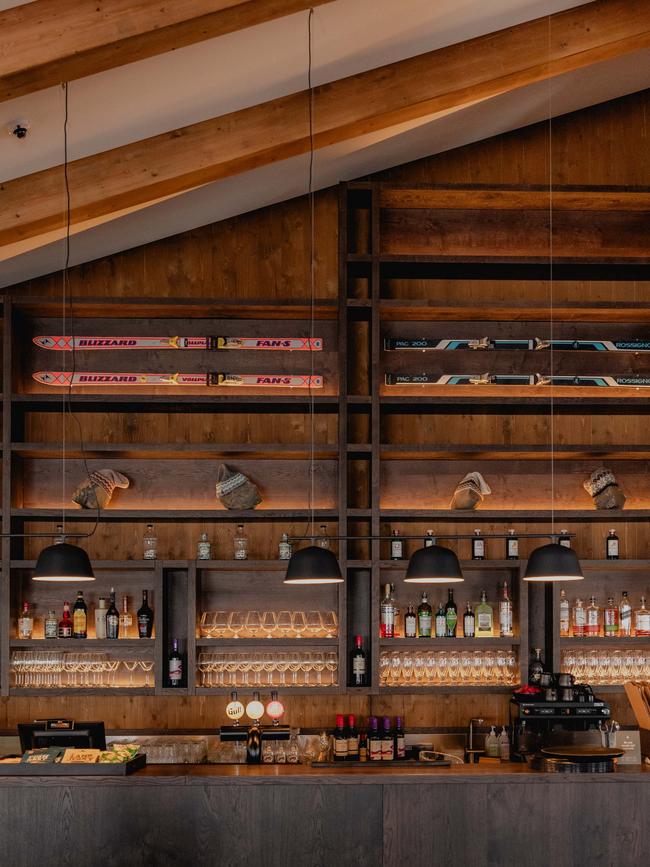
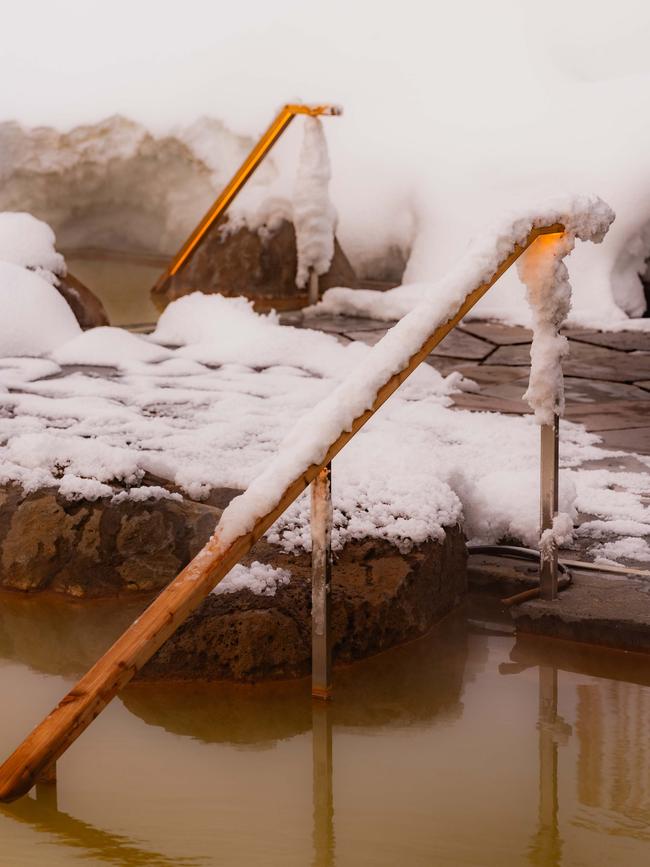
Next dawn I wake up in a pod-like wooden lodge (one of six) with windows like blueish Polaroids framing blankets of virgin snow. Across the valley, seven A-frame huts squat like wizardry alien beings. The stillness outside is eerie. This impenetrable chain of ice fortresses remained unexplored until the 1890s. Superstition prevented all but outlaws from passing through: Kerlingarfjöll – Old Lady Mountains – was said to be the domain of giant trolls. In 1780 two shepherds who strayed here disappeared; their bodies were only found after a prediction made by a local sorcerer. It was not until the 1930s that pioneering naturalist Guðmundur Einarsson recognised the potential for training mountaineers here. In 1937, the Iceland Touring Association followed, constructing a hiking cabin. A summer ski school arrived in the 1960s. But Kerlingarfjöll proved itself difficult to settle. The school closed after the eruption of the Grímsvötn volcano in 1996 clogged the slopes with ash for years. Both Kerlingarfjöll Mountain Resort, which renovated the old ski cabins, and an attempt to construct a new hotel were also eventually abandoned.
When Kerlingarfjöll was designated a nature reserve in 2017, Blue Lagoon boldly stepped in. They called in Reykjavík’s Basalt Architects and Design Group Italia to realise their vision of a Breeam-standard sustainable resort using cross-laminated pine exteriors, concrete floors and geothermal energy, which respects not only the epic surroundings but the valley’s pre-existing human structures. Highland Base all but disappears from June to October when the snow melts revealing a Marscape of volcanic ash and red rhyolite stone like a vast stretched deer hide. In a new hotel, 28 rooms (including two suites with outdoor pools) have window seats for sitting out gluggaveður, textured rock-grey bed linens and tawny carpets, while corridors display black and white photos of the former mountaineering and ski schools. An old hotel structure offers hostel lodging, and sleeping bags can be used to bed down in five of the A-frames and the original 1937 hut. A sauna stocked with Blue Lagoon products is under construction.
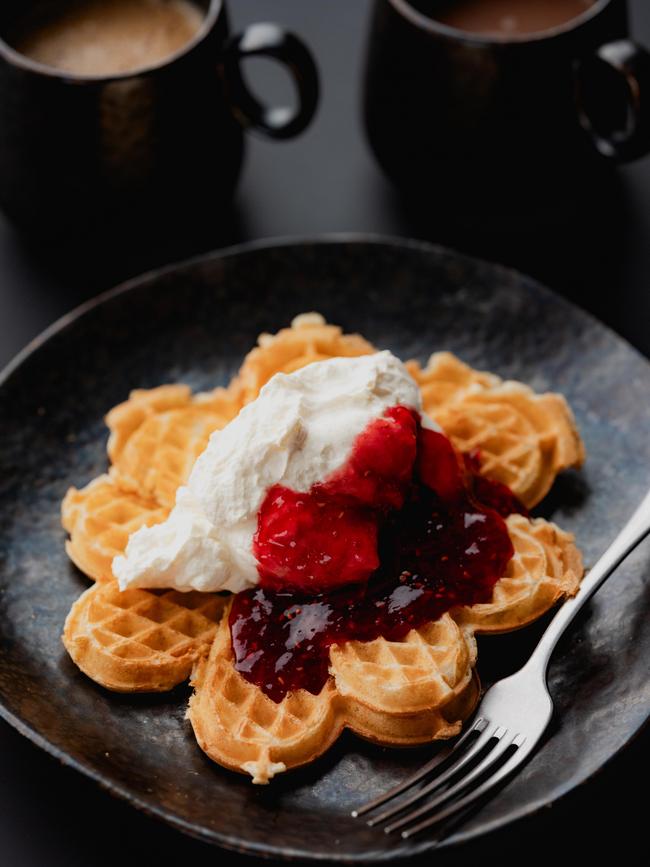
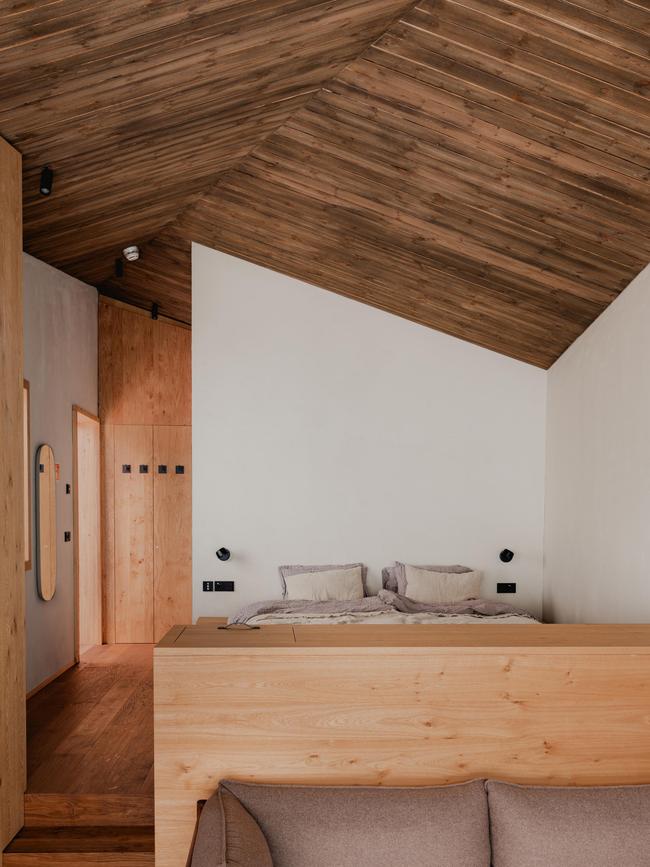
Everyone congregates in the restaurant with snowed-in windows that heighten the sense of hibernation indoors. For the bravehearted, healthy shots of cod-liver oil are on offer with breakfasts of fresh eggs, gravlax, granola and skyr (Icelandic yoghurt). The Blue Lagoon culinary team and Daði Fridriksson, Highland Base’s manager, steer the menu towards pre- and post-adventure comfort food. Calories are needed here. They are the fuel that allows those who come here to commune with the great purity and solitude of these mountains in sub-zero temperatures. This might be to Nordic ski, snowshoe or take hiking trails of up to 31 kilometres, some to Hveradalir – “the valley of hot springs” – one of the largest and least-visited geothermal areas in Iceland. Kerlingarfjöll is, in fact, a vast system of tuya, or subglacial volcanoes, formed more than 300,000 years ago. It might be minus 17 degrees outside, but beneath snowshoes lie vast, bubbling magma fields. Hot rivulets with banks of rust-coloured rhyolite run like occasional metal joins through the relentless white.
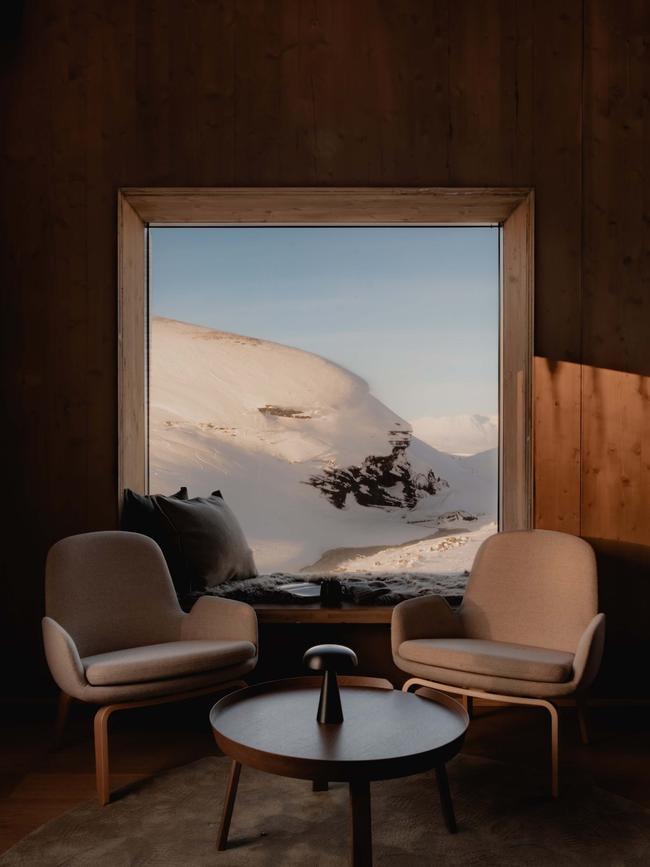
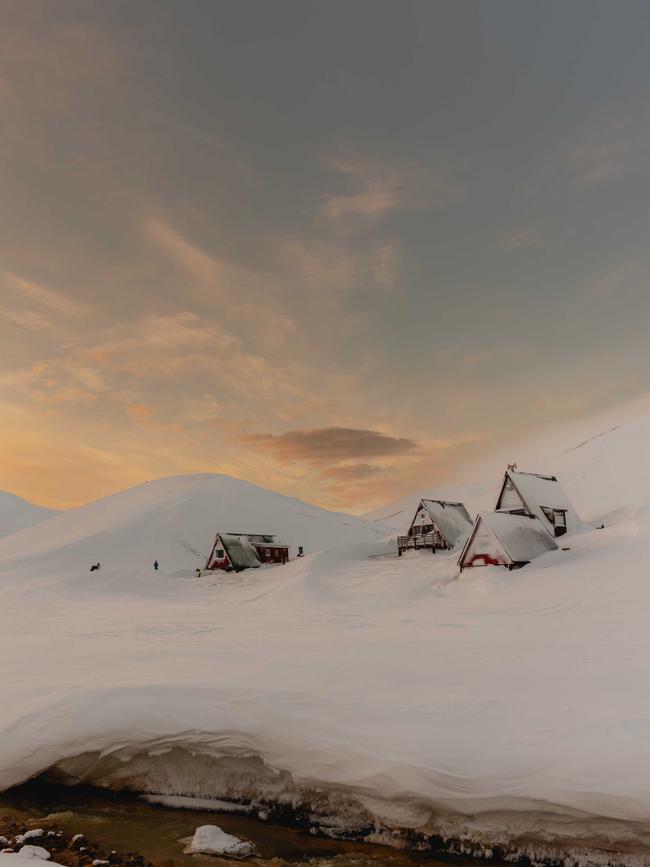
Guide to this icescape is Helga María Heiðarsdóttir, a livewire geologist and glaciologist with pigtails and screwball comic timing. Once my hiking group is fitted with crampons (boot frames that provide traction for ice climbing) and we have filed out, blinking, onto the snow, she charges ahead of us, cracking jokes about not urinating near the water supply while I shuffle behind like a juvenile puffin getting used to webbed feet. To the north, Loðmundur mountain towers 600 metres above us like an ancient ice pyramid. In summer, the 10-kilometre hike to its summit can take up to nine hours. But the trek is too risky in winter. I stop to write down my impressions, but my pen freezes up. Helga points out a raven, like a moving ink spot on upper slopes, and the dainty dotted tracks of an Arctic fox, Iceland’s only indigenous mammal, as well as the towering peaks of Snækollur and Fannborg, and the triptych Ögmundur, Röðull, and Höttur. Backlit by the sun, they could indeed be the misshapen heads of giant trolls.
That afternoon, I persuade Daði to teach me how to drive one of the superjeeps. By the time we drive out, a wind has picked up, and the snow sidles like sand across the surface of a frozen desert. Daði teaches me to “read the snow”, an infinite variety of “shell” and “salt”, reducing tyre pressure when I grind to a halt, then gently coaxing the accelerator so I can creep forward as slow as a polar bear moving on its belly over ice. That night after dinner – humarsúpa (lobster soup) and grilled Arctic char – we brave the outdoor hot pools and bathe under a bright switchboard of stars. We don’t see the Northern Lights that night. But the snow falls like feathers overnight, wiping away all human traces, so that tomorrow will be a fresh chance to relive today.
The writer travelled as a guest of Abercrombie & Kent. A&K offers a seven-day Land of Fire and Ice itinerary from $12,035 per person. This excludes flights, includes accommodation on a B&B basis, guiding and transfers throughout. abercrombiekent.com.au


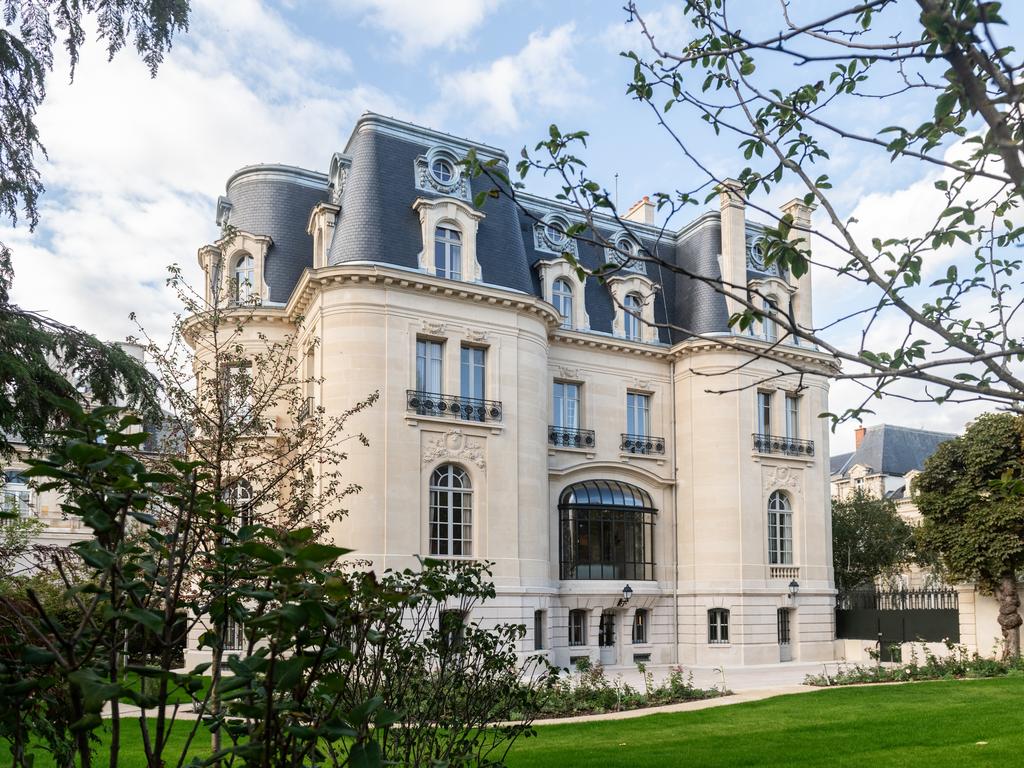
To join the conversation, please log in. Don't have an account? Register
Join the conversation, you are commenting as Logout